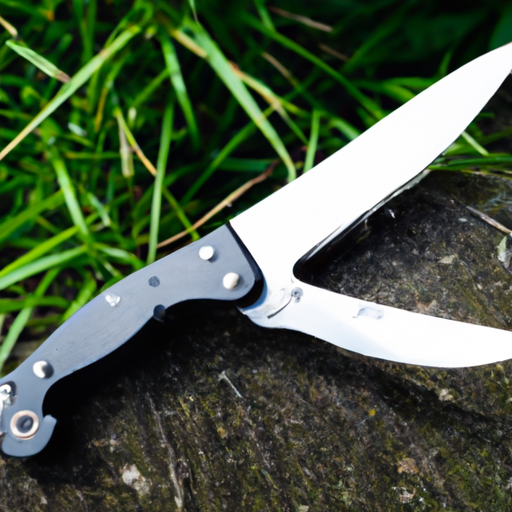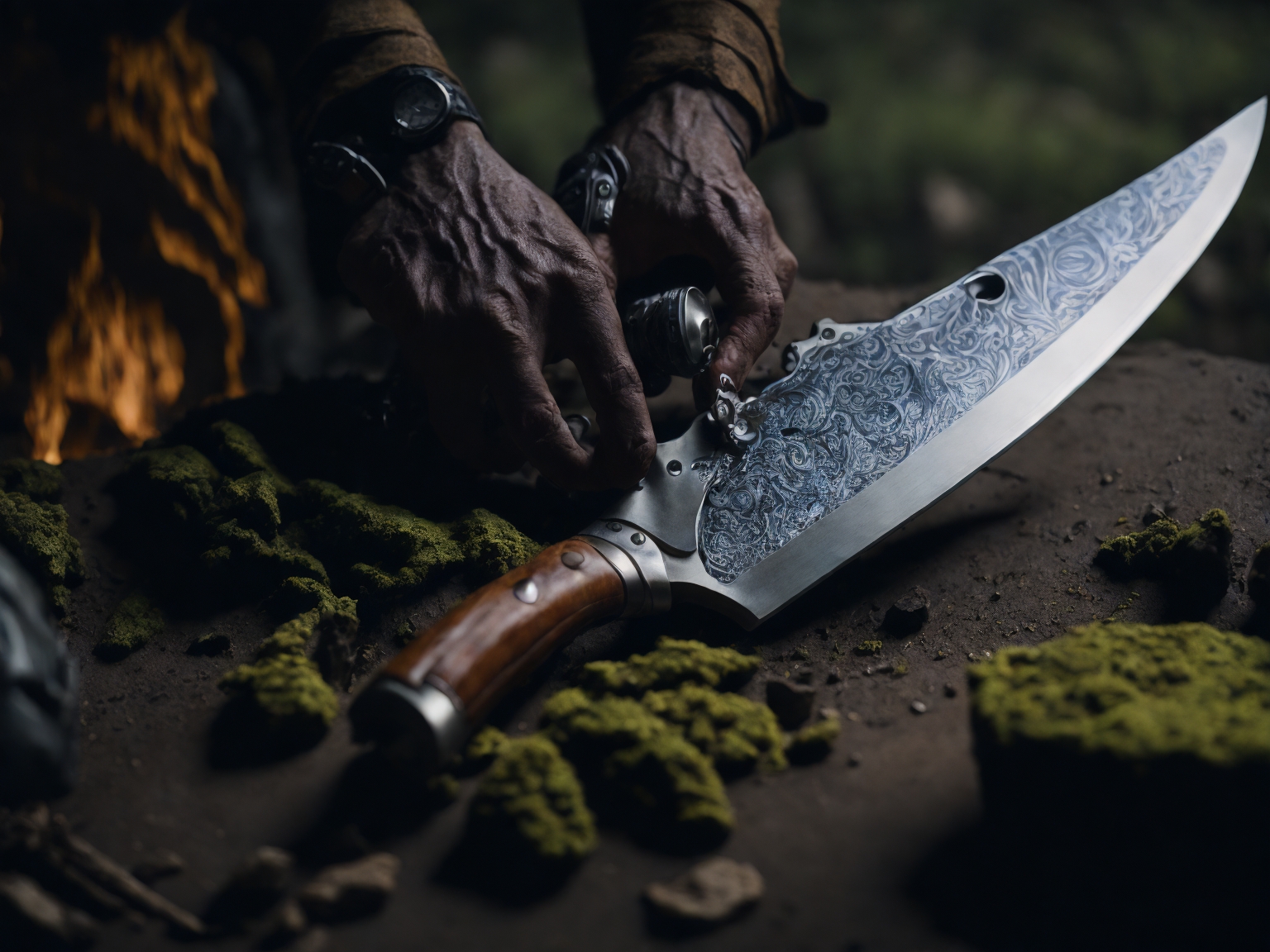
Choosing the Right Survival Knife
When it comes to choosing a survival knife, there are several important considerations to keep in mind. Whether you are an experienced outdoors enthusiast or a novice adventurer, having the right tool can mean the difference between safety and danger in survival situations. Here are some key factors to consider when selecting a survival knife.Considerations for Survival Knife Selection
- Intended Use: Consider the specific tasks you anticipate using your survival knife for. Will you primarily need it for shelter building, food preparation, or self-defense? Determining the main purpose of your knife will help guide you in selecting the appropriate size, shape, and features.
- Durability: Look for a knife made from high-quality materials that can withstand the rigors of survival situations. You want a knife that is tough, reliable, and long-lasting.
- Comfort: Pay attention to the ergonomics and comfort of the knife handle. A comfortable grip will reduce hand fatigue and allow for better control and precision during use.
- Portability: Consider the size and weight of the knife. While a larger knife may offer more versatility and strength, it can also be heavier and more cumbersome to carry. Strike a balance between functionality and portability.
Types of Survival Knives
When it comes to survival knives, there are two main types to choose from: fixed blade and folding knives. Each type has its own set of advantages and disadvantages, and the right choice depends on your specific needs and preferences.Fixed Blade vs. Folding Knives
- Fixed Blade Knives: Fixed blade knives are known for their strength, durability, and reliability. They are generally more robust and better suited for heavy-duty tasks such as chopping wood, prying, and batoning. Fixed blade knives are typically easier to clean and maintain, and they do not have any moving parts that can break or malfunction.
- Folding Knives: Folding knives, also known as pocket knives, offer a compact and versatile option for survival situations. They are easier to carry and can be conveniently stored in your pocket or backpack. Folding knives often feature a locking mechanism to ensure the blade remains securely in place during use. While not as strong as fixed blade knives, folding knives still provide utility and can handle lighter tasks.
Understanding Knife Blade
The blade of a survival knife is the heart of the tool, and understanding its various elements will help you make an informed decision when selecting a knife.Blade Length and Size
Survival knife blades come in a variety of lengths, ranging from small and compact to larger and more robust. The ideal blade length will depend on your intended use and personal preference. It’s important to choose a blade length that provides enough versatility without compromising functionality.Blade Material
The type of material used for the blade determines its overall strength, flexibility, and resistance to corrosion. Some common blade materials include stainless steel, carbon steel, and titanium. Stainless steel blades are known for their corrosion resistance and ease of maintenance, while carbon steel blades offer exceptional durability and sharpness retention. Titanium blades combine strength and lightness, making them a popular choice for survival knives.Blade Shape and Design
The shape of the blade plays a crucial role in determining its functionality. Different blade shapes are suited to specific tasks. For example, a drop point blade is versatile and ideal for general-purpose use, while a tanto blade excels at piercing and tactical situations. Consider the tasks you anticipate performing with your survival knife to determine the best blade shape for your needs.Full Tang vs. Partial Tang Blades
The tang refers to the portion of the blade that extends into the handle. A full tang blade extends the entire length of the handle and is considered the strongest and most durable option. Partial tang blades have a tang that extends only partway into the handle, resulting in a lighter and more compact design. While full tang blades are generally preferred for their strength, partial tang blades can be suitable for lighter tasks and offer more versatility in terms of design options.

Handle and Grip
The handle of a survival knife is just as important as the blade. It provides a secure and comfortable grip, allowing you to maintain control and precision during use.Handle Material
Survival knife handles can be made from various materials, each offering its own benefits and considerations. Common handle materials include wood, rubber, G-10, and Micarta. Wood handles provide a traditional and aesthetic appeal while offering a natural grip. Rubber handles offer excellent grip even in wet conditions. G-10 and Micarta handles are known for their durability and resistance to moisture and chemicals.Ergonomics and Comfort
The ergonomic design of a survival knife handle is crucial for reducing hand fatigue during extended use. Look for handles that fit comfortably in your hand and have contours that allow for a natural grip. Textured handles and finger grooves can also enhance grip and control.Grip Texture
The texture of the handle can make a significant difference in how well you can hold onto your knife. Rough or textured handles provide better grip, especially in wet or slippery conditions. Pay attention to the texture of the handle and choose one that offers the level of grip you need for your intended activities.Knife Edge Types
The type of edge on your survival knife blade will determine its cutting capabilities and suitability for specific tasks. There are three main types of knife edges to consider.Plain Edge vs. Serrated Edge
A plain edge refers to a blade with a smooth, continuous cutting surface. This type of edge excels at tasks that require precision and control, such as slicing and whittling. On the other hand, a serrated edge features small, jagged teeth along the blade, which excel at cutting through tough materials like rope and fibrous vegetation. Consider the tasks you anticipate performing with your knife to determine whether a plain edge, serrated edge, or a combination of both would serve you best.Combination Edge
A combination edge offers the best of both worlds by featuring both a plain edge and a serrated portion on the same blade. This type of edge provides versatility, allowing you to handle a wide range of cutting tasks with a single knife. Combination edges can be particularly useful for survival situations where you may encounter different materials and require various cutting techniques.Knife Sheath and Carry Options
A reliable and functional sheath is essential for carrying and protecting your survival knife. Consider the following factors when selecting a sheath.Sheath Material
Sheaths can be made from a variety of materials, including leather, nylon, and Kydex. Leather sheaths offer a classic and traditional look while providing durability and protection. Nylon sheaths are lightweight and resistant to moisture, making them suitable for outdoor use. Kydex sheaths are known for their ruggedness and excellent retention, ensuring your knife remains securely in place.Attachment Methods
Different sheaths offer various attachment methods, such as belt loops, MOLLE compatibility, or horizontal carry options. Consider how you prefer to carry your knife and select a sheath that accommodates your preferred method.Concealment and Access
In some survival situations, concealing your knife may be important. Look for sheaths that offer concealment options, such as low-profile designs or attachments that allow you to tuck the knife inside your clothing. Additionally, consider how easily you can access your knife when needed. Quick and easy access to your knife can be critical in emergency situations.Knife Maintenance and Sharpening
To ensure the longevity and effectiveness of your survival knife, proper maintenance and sharpening are essential.Cleaning and Lubricating
Regularly clean your knife to remove dirt, debris, and moisture. Use mild soap and warm water, then dry thoroughly before storing. Applying a small amount of lubricant to pivot points and the blade can help prevent rust and maintain smooth operation.Sharpening Techniques and Tools
Learn how to sharpen your knife effectively using either a sharpening stone, a honing rod, or a sharpening system. Each method requires practice and patience, but with proper technique, your knife can regain its sharpness and cutting edge. Consider investing in quality sharpening tools and practice regularly to maintain your knife’s performance.Storing and Protecting
When not in use, store your survival knife in a dry and secure place. Sheaths provide effective protection, but you can also use blade guards or knife rolls to prevent accidental damage. Avoid storing your knife in extreme temperatures or high humidity environments as this can damage the blade and handle materials.Using a Survival Knife
Knowing how to safely and effectively use your survival knife is crucial. Follow these guidelines to ensure a positive and safe experience.Basic Knife Safety
Always practice proper knife safety to avoid accidents and injuries. Keep your fingers away from the blade, use a secure grip, and never use excessive force when using your knife. Additionally, be mindful of potential hazards in your surroundings, such as loose debris or unstable terrain.Cutting Techniques
Learn and practice different cutting techniques to maximize the functionality of your survival knife. Techniques such as push cuts, draw cuts, and chopping motions can be useful in various scenarios. Understanding when and how to use each technique will help you accomplish tasks efficiently and safely.Survival Knife Functions
Survival knives serve a wide range of functions in emergency situations. These include:- Building Shelter and Fire: A survival knife can be used to gather materials, cut branches, and build emergency shelters. Additionally, it can assist in creating sparks for fire ignition using various techniques.
- First Aid and Medical Situations: Your survival knife can be utilized for cutting bandages, sterilizing tools, and performing other essential first aid tasks in emergency medical situations.
- Signaling and Communication: The reflective blade of your knife can be used to signal for help or attract attention in emergency situations. If your knife has a whistle or integrated signaling device, it can further enhance your communication capabilities.
- Food Preparation and Processing: A survival knife can assist in preparing food, gutting fish, and processing game. Its sharp blade can make precise cuts and help you turn raw ingredients into sustenance.
- Tool and Gear Repairs: In survival scenarios, equipment and gear may break or require adjustments. Your survival knife can act as a versatile tool for repairs, such as tightening screws, cutting cords, or fashioning makeshift repairs.
Emergency Uses of a Survival Knife
In addition to its primary functions, a survival knife can prove invaluable in emergency situations. Here are some essential emergency uses of a survival knife.Building Shelter and Fire
When survival becomes a priority, building shelter and starting a fire are crucial. Your survival knife can help gather suitable materials, cut branches, and shape them to construct a durable shelter. It can also be used to create sparks for fire ignition or assist in fire craft techniques such as feathering or batoning wood.First Aid and Medical Situations
In emergencies, first aid and medical care are paramount. Your survival knife can aid in cutting bandages, slicing through clothing for immediate medical attention, sterilizing tools, and even performing minor surgical procedures when no other options are available.Signaling and Communication
In desperate situations, signaling for help can mean the difference between life and death. Your survival knife can act as a signaling device by reflecting sunlight or moonlight to attract attention. Some knives even include built-in whistles or integrated signaling devices, further enhancing your communication capabilities.Food Preparation and Processing
When food sources are scarce, your survival knife can assist in hunting, fishing, and food preparation. It can gut and clean fish, skin game, and process edible plants. With its sharp blade, you can make precise cuts and prepare meals to sustain yourself in challenging circumstances.Tool and Gear Repairs
Emergencies often lead to equipment failures. Your survival knife can aid in tool and gear repairs, such as tightening screws, cutting cords, and fashioning makeshift fixes. Its versatility allows you to adapt and overcome unforeseen challenges, even when your other tools are unavailable.
Additional Survival Knife Features
Aside from the essential functions, some survival knives come with additional features that can be valuable in specific situations.Sawback Spine
Some survival knives feature a sawback spine, which allows for cutting through wood efficiently. This feature can be especially useful for gathering firewood or constructing shelter when a separate saw is not available.Firestarter
Certain survival knives are equipped with a firestarter, usually built into the handle or sheath. This integrated firestarter can generate sparks for fire ignition, eliminating the need to carry a separate fire-starting tool.Whistle
In emergencies, attracting attention is crucial. Some survival knives incorporate a built-in whistle, allowing you to signal for help or alert others to your presence. The whistle can be useful when your voice may not carry or when conserving energy is essential.Integrated Tools
Some survival knives offer integrated tools, such as a compass, mini flashlight, or a small survival kit stored inside the handle. These additional tools can increase your preparedness and enhance your ability to navigate, communicate, or handle unforeseen challenges.How Can Self-defense Techniques Be Used for Survival Purposes?
Self-defense techniques for survival are essential as they equip individuals with the skills needed to protect themselves in dangerous situations. These techniques involve a combination of physical abilities, mental preparedness, and strategic thinking. By mastering self-defense techniques for survival, individuals can enhance their chances of escaping threatening scenarios and ensure their personal safety. Whether encountering physical attacks or life-threatening emergencies, being well-versed in self-defense techniques can make a significant difference in survival outcomes.
Budget Considerations
While quality is paramount, it’s important to consider your budget when selecting a survival knife. Fortunately, there are several affordable options available that offer good quality and functionality.Quality vs. Price
When purchasing a survival knife, it’s crucial to strike a balance between quality and price. While high-end knives may offer superior materials and craftsmanship, they may not always be necessary for occasional or casual use. Consider your specific needs, budget, and intended use to find a knife that offers the right balance of quality and affordability.Affordable Options
There are various budget-friendly survival knives available on the market that provide excellent value for their price. Look for reputable brands that offer reliable materials, solid construction, and positive customer reviews. These options can help you get started with your outdoor adventures without breaking the bank. In conclusion, choosing the right survival knife is a critical decision for any outdoor enthusiast or preparedness-minded individual. By considering factors such as intended use, durability, comfort, and budget, you can select a knife that meets your specific needs. Understanding blade characteristics, handle design, and maintenance techniques will ensure your knife remains reliable and functional in survival situations. With the right survival knife in your possession, you can confidently tackle various tasks, navigate emergencies, and enhance your outdoor experiences. Remember to prioritize safety, practice basic knife skills, and maintain your knife properly to maximize its utility and lifespan. Happy adventuring!
I’m Alex, the author behind True Survivalist. As a survival enthusiast myself, I’ve created this website to serve as a valuable resource for fellow survivalists and preppers. Whether it’s understanding survival situations, emergency preparedness, or finding the right survival gear, I’ve got you covered. Through a series of informative guides, I aim to provide answers to commonly asked questions, debunk common myths, and help you avoid common mistakes. At True Survivalist, I believe in equipping you with the knowledge and tools you need to be prepared for any survival scenario. Join me on this journey of self-reliance and resilience.
